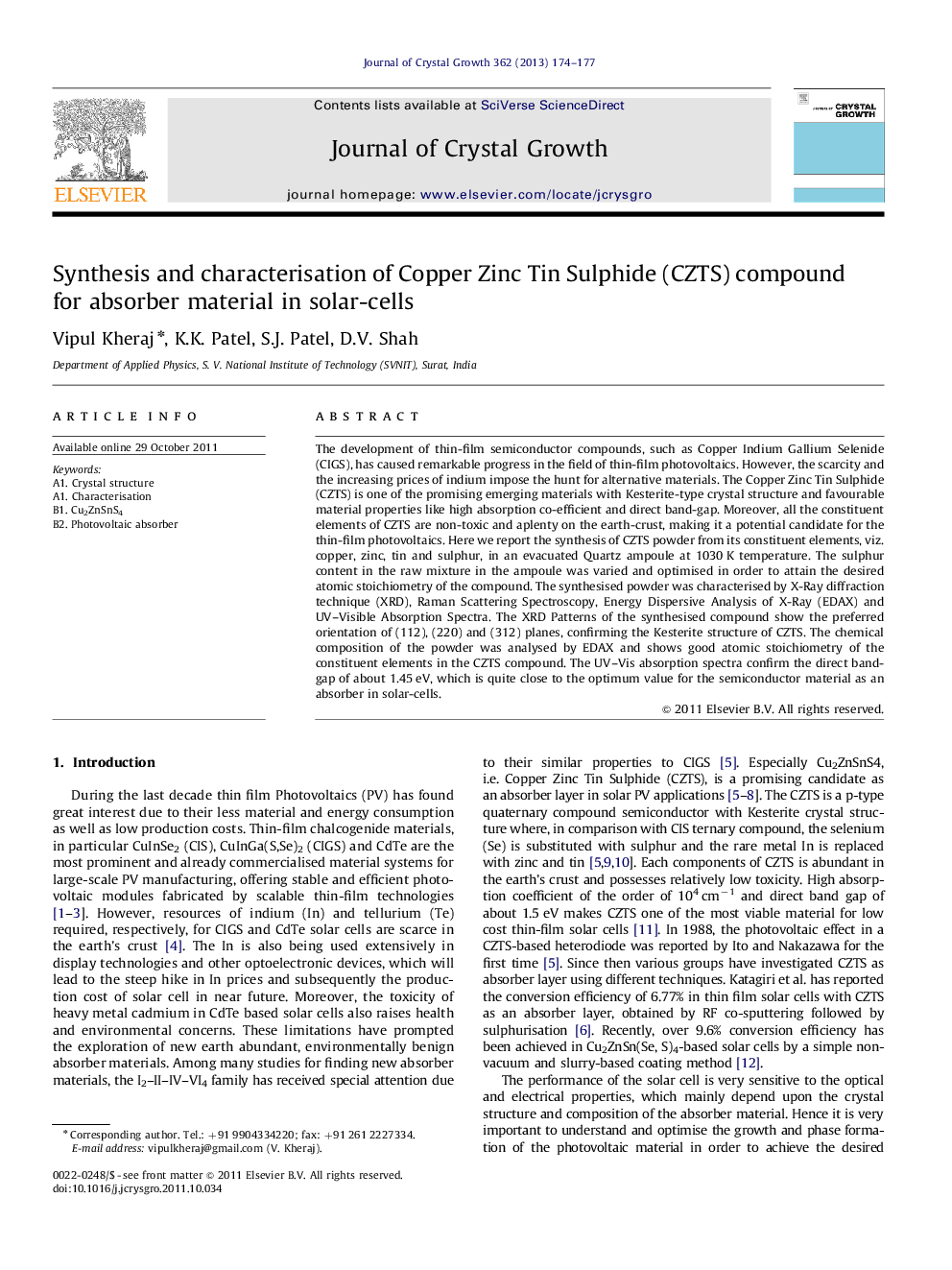| Article ID | Journal | Published Year | Pages | File Type |
|---|---|---|---|---|
| 1791303 | Journal of Crystal Growth | 2013 | 4 Pages |
The development of thin-film semiconductor compounds, such as Copper Indium Gallium Selenide (CIGS), has caused remarkable progress in the field of thin-film photovoltaics. However, the scarcity and the increasing prices of indium impose the hunt for alternative materials. The Copper Zinc Tin Sulphide (CZTS) is one of the promising emerging materials with Kesterite-type crystal structure and favourable material properties like high absorption co-efficient and direct band-gap. Moreover, all the constituent elements of CZTS are non-toxic and aplenty on the earth-crust, making it a potential candidate for the thin-film photovoltaics. Here we report the synthesis of CZTS powder from its constituent elements, viz. copper, zinc, tin and sulphur, in an evacuated Quartz ampoule at 1030 K temperature. The sulphur content in the raw mixture in the ampoule was varied and optimised in order to attain the desired atomic stoichiometry of the compound. The synthesised powder was characterised by X-Ray diffraction technique (XRD), Raman Scattering Spectroscopy, Energy Dispersive Analysis of X-Ray (EDAX) and UV–Visible Absorption Spectra. The XRD Patterns of the synthesised compound show the preferred orientation of (112), (220) and (312) planes, confirming the Kesterite structure of CZTS. The chemical composition of the powder was analysed by EDAX and shows good atomic stoichiometry of the constituent elements in the CZTS compound. The UV–Vis absorption spectra confirm the direct band-gap of about 1.45 eV, which is quite close to the optimum value for the semiconductor material as an absorber in solar-cells.
► Synthesis and characterisation of Cu2ZnSnS4 (CZTS) from constituent elements. ► Good stoichiometry in compounds prepared with 30% and 40% excess S in the raw mixture. ► Formation of CZTS with good crystalline quality confirmed by XRD and Raman spectra. ► Band gap of about 1.45 eV, which is close to optimum value for solar PV applications.
